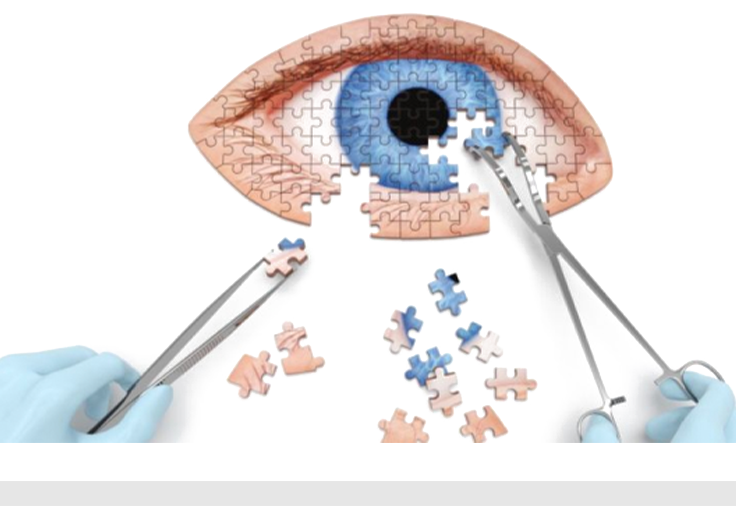Stem cells

Stem cells
Stem cell and PRP therapy in the treatment of eye diseases
The use of stem cells and PRP therapy (platelet-rich plasma therapy) in ophthalmology are innovative methods that are rapidly developing and already demonstrating high effectiveness in treating complex eye conditions. In our clinic, these techniques are applied to treat challenging pathologies such as retinal diseases and optic nerve disorders.
Stem cells in the treatment of eye diseases
Stem cells have the unique ability to transform into different types of cells, including cells of eye structures such as the cornea, retina and others. This allows them to be used to regenerate damaged tissues and treat diseases such as:
• Retinal degeneration, including hereditary forms – aimed at improving cellular regeneration and restoring the structure of the retina.
• Corneal damage – to restore transparency and promote tissue regeneration.
• Optic nerve atrophy – to preserve and enhance the functional properties of neurons.
Mesenchymal stem cells and exosomes in ophthalmology
Mesenchymal stem cells (MSCs) are a type of stem cells obtained, among other things, from adipose tissue. These cells have unique regenerative properties and the ability to transform into various cell types, which makes them especially valuable in the treatment of eye diseases. In ophthalmology, MSCs help restore cells of the cornea, retina, and other structures of the eye. They effectively eliminate inflammatory processes, reduce immune reactions, and promote the regeneration of damaged tissues.
Exosomes - are microscopic vesicles secreted by stem cells. They contain proteins, lipids, and genetic material that is involved in cell regeneration. Exosomes play a key role in intercellular communication and carry growth factors that help restore damaged eye tissue. Unlike stem cells themselves, exosomes can be administered locally, reducing the risk of rejection and complications. Their use is especially effective in healing corneal wounds, reducing inflammation, and increasing the resistance of eye tissue to damage.
Advantages of using MSCs and exosomes
Treatment methods using MSCs and exosomes offer the following advantages:
Stimulation of natural cell regeneration.
Reduction of inflammation and acceleration of healing.
*Minimal risk of side effects due to autologous (self-derived) material.
These methods offer hope to patients with corneal, retinal, and other ophthalmological conditions that are resistant to other forms of treatment.
PRP therapy in ophthalmology
PRP therapy is a treatment method that uses platelet-rich plasma, which is extracted from the patient’s own blood. Platelets contain growth factors that stimulate healing and regeneration processes. PRP therapy is used in the treatment of:
Dry eye syndrome as an adjunctive therapy.
* Clinical forms: filamentary keratitis, "dry" keratoconjunctivitis, recurrent corneal erosions, xerotic corneal ulcer, keratitis due to incomplete eyelid closure, cicatricial pemphigoid.
After keratoplasty:
• Primary corneal dystrophies (as an adjunctive therapy)
• Secondary epithelial-stromal corneal dystrophy (ESCD)
• Post-traumatic eye conditions of varying severity
Neurotrophic keratopathy:
* Post-infectious, following infection with varicella-zoster or Herpes simplex viruses
* Diabetic neuropathy
* Complication of trigeminal nerve surgery
* Local anesthetic overuse
* Corneal ulcer of various etiologies in the subacute phase
* Infectious keratitis of various genesis in the subacute phase
* Some complications after refractive surgeries
Inherited retinal diseases
Pigmentary retinitis, Stargardt disease, Retinoschisis, etc.
Optic Nerve Atrophy
Glaucomatous atrophy, ischemic optic neuropathy, atrophy following optic neuritis.
Benefits of PRP and stem cells
Stem cell and PRP therapy treatments are safe because they use materials obtained directly from the patient, eliminating the risk of rejection. The procedures are performed on an outpatient basis and do not require a long rehabilitation period, allowing patients to return to their daily lives more quickly.
